Two dozen magic / mentalism effects in one eBook!
Everything has been audience tested. David has used everything in this book at one time or another. These are not pipe dreams. It is mostly mentalism, mental magic, packet tricks, and his multi-color Cups & Balls Routine. What you are getting are over 20 e-books put together into one single volume. This e-book has taken 10 years to put together! You will love and use the effects in this book.
Act of B'wavery:
A spectator calls out any four-of-a-kind. The performer removes said four cards and lays them out on the table. The spectator eliminates 3 of the cards. The 3 discards are now turned face down and shown to have red backs. The deck is now spread face down and is seen to be a red backed deck. The single face up playing card that was not eliminated is now turned face down and is seen to have a blue back! As a kicker, the 3 eliminated cards are now turned face up and are now blank face cards!
Backlash:
This is a fun routine in which two cards are selected from two different colored packets. The selected cards trade packets 3 times, each time seemingly more impossible than the last.
Blind Date:
The performer introduces a deck of cards that has swimsuit models on the cards. It is explained to a male spectator that he is going to go on a date with one of these 52 girls. All he has to do is psychically determine her phone number.
You bring out 5 cards, which are numbered 1 through 10. All of the odd numbers are on one side of the cards, and all of the even numbers are on the other side of the cards. In other words, the card marked with a 1 on one side is marked with a 2 on the other side. The others are, of course, 3/4, 5/6, 7/8, and 9/10. Tell the spectator that you will give him a little help in determining his mystery date's number.
The spectator lays out the number cards in a totally random and freely chosen order. He then deals down into the deck according to the number that he has created. The card that comes at the end of the deal is turned face up. It is the 6 of Spades with a picture of Lisa on it. A prediction that has been sitting on the table is opened. It reads, "Your mystery date's name is Lisa. She is 27 years old, and she lives at # 6 Spade Drive." Of course, the prediction is correct, but what about the "27 years old"? The pile of dealt cards is counted. There are exactly 27 cards!
Case File:
A stage routine that is a sure-fire winner.
A large folder labeled, "Case File" is set on display on an empty table down center stage. The performer now draws attention to three "evidence" boxes resting on a table rear stage right. Each box has a question mark on it. The mentalist opens each box, and removes the objects from within. Each item is placed in front of the box from where it came. They are a gun, a knife, and a bottle of poison. The weapons are placed back into their boxes, and the boxes are then mixed. Next, five large cards are shown. Each card displays a "suspect". These are placed in a row with the faces toward the audience on a table rear stage left.
And finally a pocket watch is shown. It is opened, and it is shown that by spinning the crown the watch's hands move. This is handed to a spectator.
The performer now calls up a second spectator, and brings her over to the evidence boxes, and points out each weapon. It is explained that the murderer used one of three weapons. The mentalist says, "One of these three weapons was used in this crime. It is up to you to do just that, to psychically determine which of the three weapons was used. "The spectator selects an evidence box with a weapon inside, and it is placed next to the Case File. Tell her that you will come back to her in a moment.
Next, the performer approaches the spectator with the watch.
You pop open the watch, and again demonstrate how to move the hands. The watch is closed and handed to the spectator who is then instructed to spin the crown till his heart is content. When he is satisfied he opens the watch and reads the time , which is then written down on a dry erase board. The dry-erase board is set next to the Case File.
Now a third spectator is asked to stand at his seat. When he stands he is shown the line-up of the suspects. He is then asked to call out a number between one and five. His number is noted, and the suspect that corresponds to the number is "arrested", and placed on a stand next to the Case File.
Now, for the pay-offs. The performer goes over to the weapon. Let's say it is the poison. Next the "Case File" is opened. An envelope marked, "WEAPON" is removed. It is opened, and inside is a piece of paper that reads, "The murderer used the POISON". Another envelope is removed from the "Case File". It is marked "TIME". It is opened, and on the paper in it is written, "The murder took place at 10:45 ". Of course, this is an exact match. Finally, a third envelope is removed, and it is labeled," MURDERER ". This is opened, and inside is an exact match of the suspect selected by the spectator. Case closed.
Coincidence & Fate:
This is one of David's favorite routines.
A shuffled ESP deck is placed on the table. A spectator rolls a pair of dice until satisfied. Using the total on the dice, the spectator deals down into the deck, and places the card at that number off to the side unseen. The deck It is reassembled, and a second spectator repeats the process. When the two randomly selected cards are turned over, they match. The performer explains that this could all have been nothing more than a coincidence. After all, there are 5 of each symbol in the deck. However, this was not a coincidence. It was an act of fate.
The performer picks up an envelope that has been in full view the entire time. Inside is one single card. It is a perfect match to the selected cards. No multiple outs, no gaffed cards, and no gaffed dice! In fact, this can be done impromptu (as long as you have an ESP deck of course).
David's ESP Routine:
A mainstay in David's close-up mental show. 3 killer effects that are virtually self-working. The deck is mixed thoroughly You psychically tell a spectator the symbol that he has freely cut to (oh, you tell him the symbol at the bottom of the cut off portion ... you never see the card nor does the spectator until you reveal it!). Then the spectator selects (a free choice) any card, which is placed off to the side unseen. The deck is cut into two piles. The cards of each packet are turned face up one at a time (the spectator can do this himself). Whenever the symbols match, those cards are removed, and placed next to the face down selected card. When the dealing is concluded, only the (say) circles matched. The selected card is turned face up to reveal a circle! The spectator selects yet another card, which is placed aside sight unseen. The deck is once again separated into two piles. The spectator selects one of the piles. He then eliminates all but one card. That card is placed next to the selected card. They are turned face up and are seen to match. As a finale, all of the cards are turned face up and are seen to match! All of the stars are with the stars; all of the squares are with the squares, etc!
David's ESP Trick:
(This is not to be confused with David's ESP Routine.) In effect, the performer lays out five cards, each of which has an ESP symbol on them. All of the cards are different and unprepared. Attention is now drawn to a small coin envelope, which, as the performer explains, contains a duplicate of one of the cards on the table. This is the prediction, and is kept in full view throughout the entire proceedings. A spectator now uses his mind select one of the cards on the table. The envelope is now opened, and it is found that the prediction matches the spectator's selection!
The Devlin Cups & Balls:
This is not an ordinary Cups & Balls routine. In this routine the balls are three different colors. The cups are ordinary, yet many magicians will suspect a chop cup set. This routine is nice for the trade show performer in that it resets instantly.
Here is a video demo of this routine: http://www.youtube.com/watch?v=a03x6hgFAws
Four Thoughters:
The effect is simple. The performer displays a jumbo playing card resting face in on an easel. In this condition it is impossible to determine the identity of the card. This card is placed in full view.
A ball of paper is now tossed into the audience. It is tossed three times, and the person who catches the ball on the third toss joins the performer on stage. The "volunteer" is blindfolded and spun around three times, and is then told to point at four people. As he points, the performer tells the people in the various places to stand up.
After the four randomly chosen people are standing, the onstage volunteer removes his blind fold, and selects one of the four, and the other three retake their seats. This has all been done to ensure the impossible conditions of the test. The spectator that the on stage volunteer has selected is now given a series of choices such as, "Do you like red cards or black cards? Spades or Clubs?" Etc. She continues making choices until a final card is chosen. Let's say that she names the Queen of Diamonds. The jumbo card is now removed from the easel, and given to the on-stage volunteer. He turns it around, and it proves to be the Queen of Diamonds! No switches, no extra cards, no gaffs. (This is a stage effect that can only be done with large audiences of at least 100 people).
Guilty As Sin Aces:
A deck is removed from its box, which is set aside.
The joker is removed and set aside. The shuffled deck is then placed before a spectator. The spectator cuts the deck into approximately four equal piles. The top card on each pile is turned face up. However, they are not, as expected, the aces. They are, in fact, indifferent cards. You tell the spectators that those are "Indicator Cards". Each card tells you where the aces are in the pile. Let's say the first pile's card is a 5. You count down 5 cards from the top of that pile, and the last card on the count proves to be the 1st ace. This is done with the other three piles with each ace turning up after the counts.
Before you chalk this up to "another ace cutting trick", take a look at the features. No rough / smooth. No short cards. No long cards. No thick cards. No memorization. No sleight-of-hand. No "messing with the deck "after each cut. When the spectator cuts the cards, neatness does not count. You never miss, and, best of all, this trick is totally self-working!
Intuition:
This is a new method for the Eddie Joseph classic "Premonition". In effect, A cased deck is placed on the table. You remove your wallet, and place it on the table. Both are on the table, and they are there in full view before anything happens. You tell the spectators that you removed one card from the deck, and put it in your wallet. A spectator then selects a card using only her mind. The spectator herself removes the deck from the case, and deals the cards one at a time to the table. There are only 51 cards. The thought of card is missing. You then open your wallet, and remove a card. It is the thought of card!
Equivo-lock:
Eight keys and one padlock are displayed. The spectator tests each key and it is found that only one key (and one key only) opens the lock. The padlock is locked and the keys are all placed into a wine glass, and thoroughly mixed. The spectator then eliminates keys until only one is left. It is the key that opens the lock! No switches, and the lock and keys are not gaffed.
Mind Control:
This is David Eldridge's treatise on the Art of Equivoque. Five object in front of the spectator. He HAS to take the third one from the left ... .What do you do? Read this informative and up-to-date 44 page booklet and find out. Not only that, but find out how to do it the right way. David has an almost scary mastery of this technique and he teaches you the details he's learned from years of trial and error in the use of the Magician's Choice Force.
He shows in easy and straight forward language how he does this useful and powerful technique in such a way that the spectator never even suspects that he or she is being manipulated!
State of The Union:
The performer hands an envelope to a spectator to hold. The performer then removes a deck of cards from its case.
The cards are not playing cards, however. In this deck, each card bears the name of a state in the United States. The performer thumbs through the deck allowing the spectators to see that all of the cards are different (when David performs this, he even tells them that in order to have a full, 52-card deck, he has added Washington DC and Puerto Rico). The deck is then divided into 4 approximately equal piles. A spectator now selects one of those piles to use in the experiment, and the other three piles are discarded. The selected pile is then dealt into three new piles. Again, the spectator selects one of the piles to be used, and the other two are discarded. It is seen that the selected pile consists of only four cards. These cards are laid into a face down row, and the spectator eliminates all but one of those cards. The spectator who has been holding the envelope the entire time is now asked to remove the card that is in the envelope. On the card is the name of a State. The selected card is now shown to match the prediction!
Time Out:
The performer jots down a prediction on a small piece of paper, folds it into quarters, and drops it into a coffee cup.
A spectator is now asked to name a time She says, "7:35" She now reaches into the coffee cup, and removes the slip of paper, opens it up, and reads the time Of course, it is 7...: 35! This is totally impromptu!
Thought of Card At Thought of Number:
The title says it all. One spectator thinks of a card. A second spectator thinks of a number. The cards are thoroughly mixed. The second spectator names his thought of number. The deck is directly handed to him and he counts down to his selected number. The card at his number is the card thought of by the 1st spectator! This is an impromptu effect that can be done with a borrowed deck!
Word For Word:
A deck of 52 cards is freely shown. Each card bears a single word. All 52 words are different. The mentalist mixes the cards and hands the deck to a spectator. The mentalist now turns his back to the spectator and puts his hands behind his back. The spectator now makes a random and free choice of one of the words. However, the word is placed sight unseen into the spectator's pocket. So, even he has no idea which word he has chosen. The deck is returned to the mentalist's hands. With his back still to the spectator, he instantly calls out a word. The spectator removes the card from his pocket and it has that very word on it!
No fishing, no anagrams, no force, no memorization, no foolin '. This is self-working, and though neither you nor the spectator see the word on the selected card, you instantly know the word in the spectator's pocket!
Zodiac:
A spectator shuffles a Zodiac deck. The spectator begins to deal cards into a face down pile. She stops at any point. That pile is divided up into two piles, and one of the piles is selected. The spectator makes a series of choices that eliminates all but one card. This selected card is kept face down under her hand.
A second spectator takes a packet of six cards. Each card has two numbers on it, one number on each side. The second spectator now creates a six-digit number with those cards. The choosing of the numbers is totally up to him. Once the number is made, the digits are added together. The digits of the total are added together. This continues until a single digit is arrived at. When the card is turned over, the number matches. Not only that, but the card is the Gemini. The spectator's astrological sign is the Gemini!
Las Vegas Passover:
An ungimmicked rendition of Red See Passover, that will fry your audiences.
Salad Dressing:
Paul Harris said that this was one of the best Oil & Water effects that he had ever seen!
The Gypsy Hex:
David's version of Peter Kane's Gypsy Curse. Much more visual than the original, and will put your spectator's jaws on the floor!
Jump Back Jokers:
4 jokers are shown fronts and backs. One joker is removed and placed away. There are still 4 jokers in the packet. You offer to repeat the trick, but decide it would be better to do another trick instead. The packet is turned face up and the cards are now the 4 aces! Everything can be examined as no gaffs are used!
Vanishing Point:
4 queens are shown front and back. One at a time they each turn blank until all four are blank. In the blink of an eye they return!
Die-Lemma:
A spectator cuts the deck. Another spectator rolls Poker Dice until a single card has been reached. The 1st spectator has cut the deck at the "rolled" card!

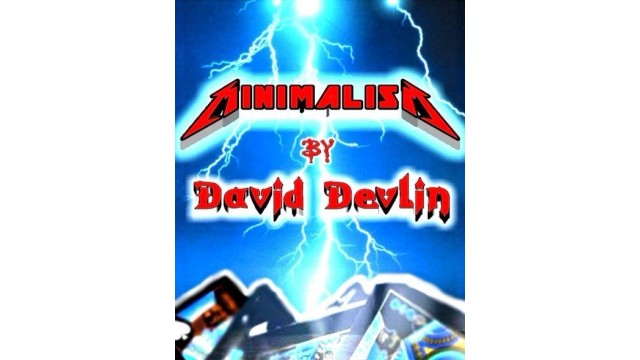











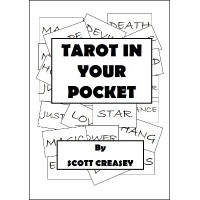
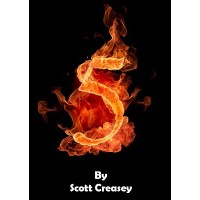
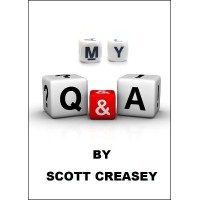
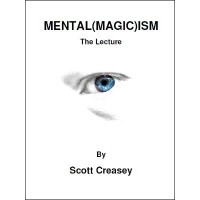
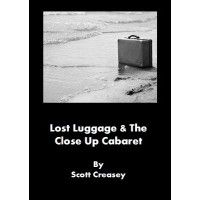
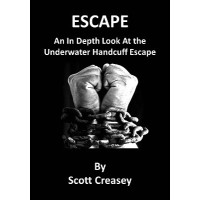
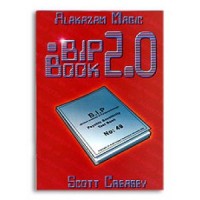
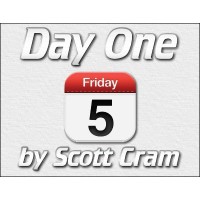




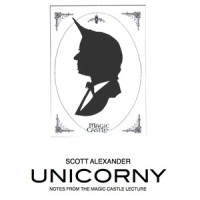
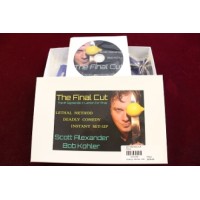
-by-Scott-Alexander-200x200.jpg)
